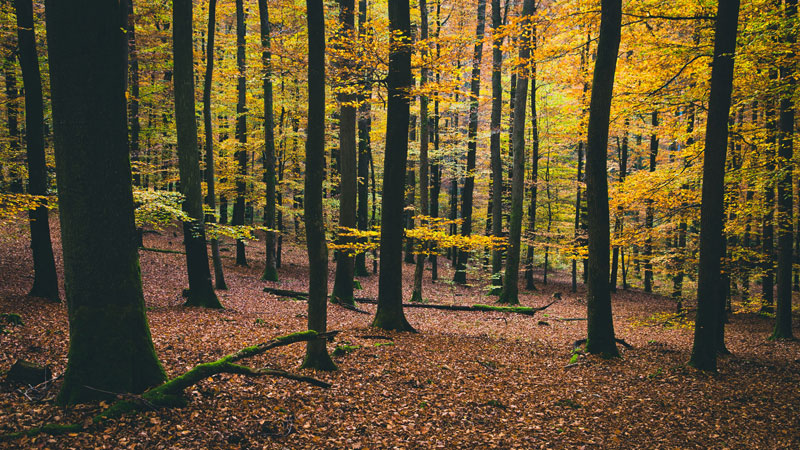
Ancient woodland is classed as woodland that has existed since 1600AD in England and Wales and 1750AD in Scotland.
The Forestry Commision states that 13% of the total UK land area is made up of woodland, while the Woodland Trust notes that only 2% of UK land area is classed as ancient woodland.
Ancient woods provide some of the richest habitat for wildlife and threatened species, and some of these special places may still contain elements of the original wildwood that covered the UK 10,000 years ago, after the last Ice Age. Due to their slow maturation, ancient woods have been largely undisturbed by modern life, preserving not just plant and wildlife, but also historical traces of human activity as our ancestors used the woodland for survival.
Ancient woods are often those we most love visiting, as they provide such a rich depth of experience. Bluebells are often found in ancient woodlands, as is wild garlic, mushrooms, celandines, anemones and other flowers we love to seek out while walking.
The Woodlandr database maps ancient woodlands throughout the UK mainland, including England, Scotland and Wales. Bringing together official government data from different agencies for the first time, you can now search for the names and locations of ancient woodlands near you. Not all of this land is publicly accessible, but you can use our Woodlandr Map to discover those ancient woods in your local area.
The Woodlandr map includes the two types of ancient woodland - Ancient Semi-Natural Woods and Ancient Replanted Woodland. Ancient Semi-Natural Woods are woodlands that have developed naturally and retain their natural species. Ancient Replanted Woodland are areas that have been always been woodland but which have had their original tree species replaced with new varieties. These replanted woodlands still retain many of the ecological characteristics of ancient woodlands.
Woods planted or growing up today will not become ancient woods as we know them in 400 years’ time because the soils on which they have developed have been modified by modern agriculture or industry, and the fragmentation of natural habitats in today’s landscape hampers species' natural movements and interactions. Many species characteristic of ancient woodland are slow to disperse and do not colonise new areas easily.
* Figures correct as of 31st March 2017
